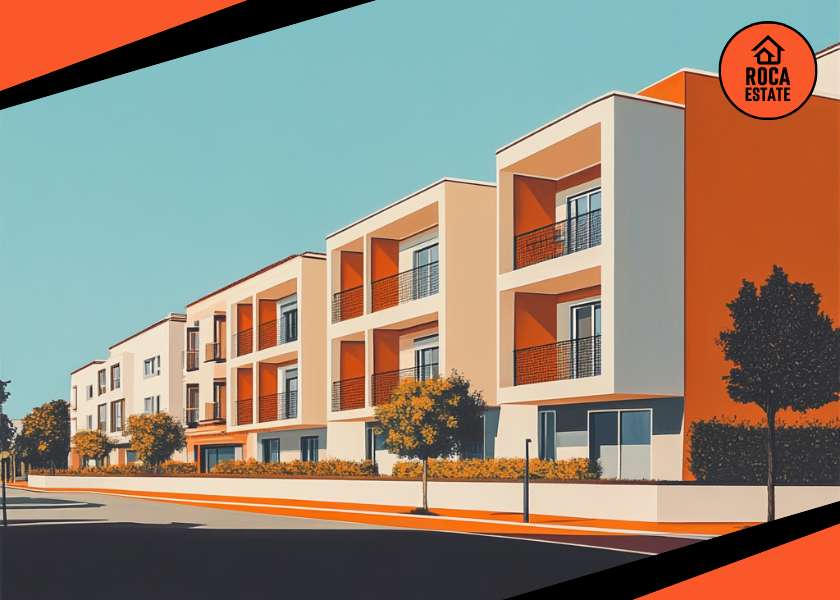The Portuguese rental market saw a sharp 10% year-on-year increase in median rents in Q1 2025, reaching €8.22/m², according to the latest data released by Instituto Nacional de Estatística (INE). At the same time, the volume of new lease agreements dropped by 10.4% compared to the same period in 2024. This contrasting movement — rising rents amid shrinking activity — marks a significant shift in market conditions, with key implications for those who are interested in commercial real estate investments, evaluating residential and mixed-use assets across Portugal.
For commercial real estate investors eyeing the Portuguese market, these dynamics offer both opportunity and caution. High rental yields in some areas mask potential volatility, while emerging markets outside the traditional urban centers are beginning to show stronger momentum.
Key Market Movements in the Portuguese Rental Market
1. Urban Core Strength, But Signs of Saturation
The Lisbon Metropolitan Area continues to command premium rents, with the city of Lisbon posting the highest median value at €16.00/m². However, its year-on-year growth (5.1%) underperforms the national average, suggesting a plateau in pricing power. Cascais and Oeiras also reflect similar trends – high base rents with modest growth (1.1% and 4.2% respectively).
Investor takeaway: Prime urban assets remain stable but less likely to offer significant short-term yield expansion. Focus should shift to income security and long-term tenant profiles in these zones.
2. Secondary Cities Are Driving Growth
Municipalities like Gondomar (+24.4%), Maia (+18.0%), and Funchal (+17.1%) posted substantial rental growth, significantly outpacing national figures. Some of these areas also showed growth in leasing volume, despite a nationwide contraction, highlighting their rising relevance in the Portuguese rental market.
Investor takeaway: Look beyond Lisbon and Porto. The data supports a shift in investor focus toward high-growth, under-the-radar cities that offer better yield potential and growing tenant bases.
3. Geographic Volatility Demands Granular Risk Assessment
Only Baixo Alentejo recorded a year-over-year increase in leasing activity among the 26 sub-regions. Meanwhile, areas like Alentejo Central (-14.4% in rent, -24.2% in leasing volume) saw marked declines.
Investor takeaway: Regional performance is becoming more uneven. A granular, local-market analysis is essential before deploying capital. National averages obscure risks tied to supply constraints, local economies, or migration trends.
4. Structural Pressure on Housing Supply
The steady rise in median rents despite falling lease volumes indicates constrained supply in the residential rental sector. While this points to opportunity, it also raises questions about long-term affordability and potential regulatory responses.
Investor takeaway: Monitor policy shifts closely, particularly around rent control, housing subsidies, or zoning reform. Aligning investment strategies with sustainability or affordability initiatives may also unlock public-private development opportunities.
Forward Outlook: What to Watch in the Portuguese Rental Market Going Forward
The 10% annual rent growth highlights strong demand fundamentals, but the 2.5% decline versus Q4 2024 signals a potential inflection. This shift could be seasonal, but also reflects market fatigue at current price points, particularly in overheated submarkets.
Key watchpoints for investors in the coming months:
- Policy Responses: Rising rents and shrinking access could push lawmakers toward stronger regulation.
- Demand Trends: Continued urbanization, digital nomad inflows, and demographic shifts will reshape demand geography.
- Macro Conditions: Interest rates, wage inflation, and consumer credit health will directly affect occupancy and tenant churn.
Conclusion: Risk-Adjusted Targeting Is Essential
Portugal’s rental market remains a compelling arena for real estate investors, but it now demands a sharper, data-informed approach. High-growth zones exist, but they are increasingly outside the traditional core. At the same time, structural constraints and policy risks are mounting. Investors should prioritize:
- Deep local market intelligence.
- Diversified asset exposure (urban + secondary).
- Adaptive leasing strategies that anticipate evolving tenant preferences.
The next quarter will be crucial for identifying whether current pricing resilience is a temporary spike or part of a longer trend. Navigating this uncertainty with precision will define successful investment outcomes in Portugal’s evolving real estate landscape.
Looking to navigate the Portuguese rental market with confidence? Connect with the experts at Roca Estate for data-driven investment strategies and on-the-ground insights tailored to your portfolio goals




































































































